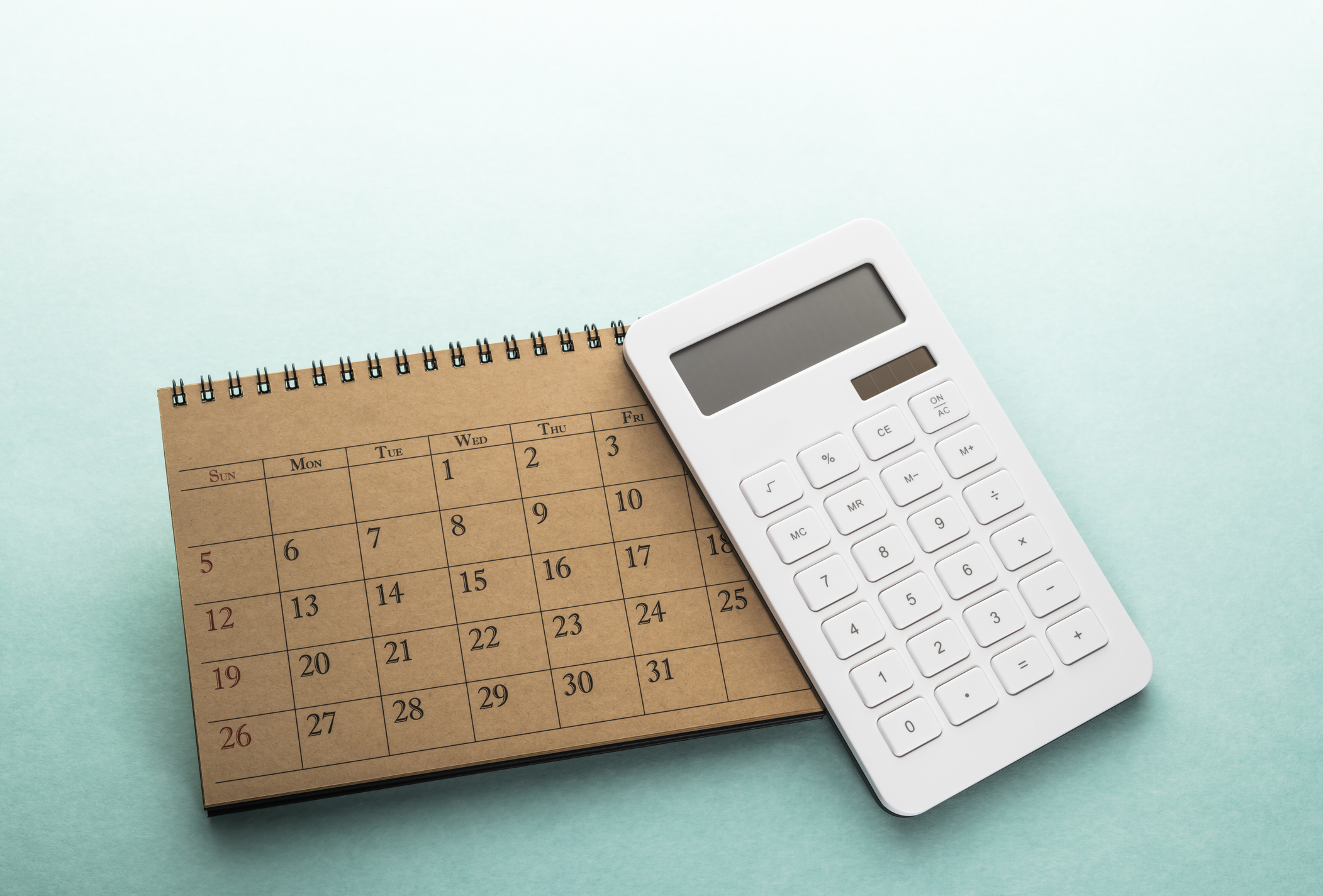When Are Estimated Tax Payments Due for 2025?
Learn when quarterly estimated tax payments are due, who needs to pay, and how to calculate them.


Making estimated tax payments is important since the U.S. tax system operates on a "pay-as-you-go" basis. This means the IRS expects you to pay a portion of your income as soon as you earn it.
As an employee, the government automatically withholds taxes from your paycheck based on your Form W-4. Also, retirees may have taxes taken from their Social Security payments and retirement plan distributions.
However, what if you are self-employed or don't have taxes withheld from other sources of taxable income, such as dividends, capital gains, interest, rental income, or alimony? In that case, you are responsible for making estimated tax payments to the IRS.
From just $107.88 $24.99 for Kiplinger Personal Finance
Become a smarter, better informed investor. Subscribe from just $107.88 $24.99, plus get up to 4 Special Issues

Sign up for Kiplinger’s Free Newsletters
Profit and prosper with the best of expert advice on investing, taxes, retirement, personal finance and more - straight to your e-mail.
Profit and prosper with the best of expert advice - straight to your e-mail.
If you are making estimated payments, the next quarterly due date is January 15, 2026. Here's what else you need to know.
What are estimated tax payments?
Estimated tax payments are the taxes you pay to the IRS throughout the year to account for income you've earned that wasn't subject to tax withholding.
- When paying estimated taxes, you usually make four equal payments and follow the IRS's yearly schedule. (More on that below.)
- Estimated tax payments are commonly referred to as "quarterly" payments, even though they might not necessarily be three months apart or cover three months of income.
Quarterly estimated tax payment due dates
The table below shows the payment deadlines for 2025. (Note that some people will have extended IRS tax deadlines for estimated tax payments due to residing or working in IRS-designated disaster areas.)
Payment | When Income Earned | Due Date |
1st Quarter Payment 2025 | Jan. 1 to March 31, 2025 | April 15, 2025 |
2nd Quarter Payment 2025 | Apr. 1 to May 31, 2025 | June 16, 2025 |
3rd Quarter Payment 2025 | June 1 to Aug. 31, 2025 | Sept. 15, 2025 |
4th Quarter Payment 2025 | September 1. to Dec. 31, 2025 | Jan. 15, 2026 |
Sometimes, you can deviate from the set estimated tax payments schedule by following specific rules.
For example, if you pay all your estimated taxes for the 2024 tax year before Tax Day, you will not have to make additional tax payments for the rest of the year.
Additionally, if you submit your 2024 federal income tax return by Jan. 31, 2025, and pay the entire balance due, you won't have to make the final estimated payment for 2024, which would normally be due on Jan. 15, 2025.
Who should make quarterly estimated tax payments?
You only need to make estimated tax payments if you have taxable income.
Note: The most common taxable income for many people is earned income (e.g., wages, tips, bonuses, etc.). However, some people are surprised that they may have to pay taxes on unemployment income, taxes on Social Security, or other taxes on other retirement income.
But for estimated taxes, suppose you have taxable income in Aug. 2025. In that case, you don't have to make an estimated tax payment until Sept. 15, 2025. You can pay the entire estimated tax by the Sept. 15 due date or pay it in two installments by Sept. 15, 2025, and January 2026.
If more than two-thirds of your income is from farming or fishing, you only need to make one estimated tax payment for the 2024 tax year, due by Jan. 15, 2025. If you meet the farming/fishing income threshold and file and pay your taxes by Mar. 1, you don't need to make estimated payments.
How to calculate estimated taxes
To calculate your estimated tax payments, use Form 1040-ES.
- First, determine your expected adjusted gross income (AGI), taxable income, taxes, deductions, and credits for the year.
- Then follow the instructions on the Form 1040-ES worksheet to assist you.
You can refer to your previous year's tax return as a general guide. Your goal is to estimate your expected annual income.
If you overestimated your tax, you can adjust your estimated tax payments using another Form 1040-ES worksheet.
You can also recalculate your tax estimate if your circumstances change or tax law changes impact your tax liability for the year.
How to make estimated tax payments
To pay estimated taxes, use Form 1040-ES. You can pay by check, cash, money order, credit card, or debit card.
There are also online payment options like the Electronic Federal Tax Payment System (EFTPS). The instructions for Form 1040-ES explain the different payment methods.
Penalties for late estimated tax payments
Failing to pay enough taxes during the year can lead to IRS penalties. Even if you anticipate a refund when you eventually file your return, the IRS may penalize late or insufficient estimated tax payments.
There are some potential exceptions to tax penalties, however. For example, if you've experienced an unexpected event like a casualty, disaster, or unusual circumstance. Or, if you're at least age 62, retired, or have become recently disabled, and your underpayment resulted from a "reasonable cause" and not "willful neglect."
Since these exceptions are limited, consider paying most of your tax liability for the year through withholding or estimated tax payments.
State estimated taxes
If you live in a state with income tax, remember that you might need to make estimated tax payments to your state as well.
The due dates for state payments may differ from the federal dates, so check with your state's tax agency.
Related Content
Profit and prosper with the best of Kiplinger's advice on investing, taxes, retirement, personal finance and much more. Delivered daily. Enter your email in the box and click Sign Me Up.

Kelley R. Taylor is the senior tax editor at Kiplinger.com, where she breaks down federal and state tax rules and news to help readers navigate their finances with confidence. A corporate attorney and business journalist with more than 20 years of experience, Kelley has covered issues ranging from partnerships, carried interest, compensation and benefits, and tax‑exempt organizations to RMDs, capital gains taxes, and income tax brackets. Her award‑winning work has been featured in numerous national and specialty publications.
-
 Forget FIRE: Why ‘FILE’ Is the Smarter Move for Child-Free DINKs
Forget FIRE: Why ‘FILE’ Is the Smarter Move for Child-Free DINKsHow shifting from "Retiring Early" to "Living Early" allows child-free adults to enjoy their wealth while they’re still young enough to use it.
-
 7 Tax Blunders to Avoid in Your First Year of Retirement
7 Tax Blunders to Avoid in Your First Year of RetirementA business-as-usual approach to taxes in the first year of retirement can lead to silly trip-ups that erode your nest egg. Here are seven common goofs to avoid.
-
 How to Plan for Social Security in 2026's Changing Landscape
How to Plan for Social Security in 2026's Changing LandscapeNot understanding how the upcoming changes in 2026 might affect you could put your financial security in retirement at risk. This is what you need to know.
-
 10 Cheapest Places to Live in Washington
10 Cheapest Places to Live in WashingtonProperty Tax Is Washington your go-to ski destination? These counties combine no income tax with the lowest property tax bills in the state.
-
 3 Major Changes to the Charitable Deduction for 2026
3 Major Changes to the Charitable Deduction for 2026Tax Breaks About 144 million Americans might qualify for the 2026 universal charity deduction, while high earners face new IRS limits. Here's what to know.
-
 Retirees in These 7 States Could Pay Less Property Taxes Next Year
Retirees in These 7 States Could Pay Less Property Taxes Next YearState Taxes Retirement property tax bills could be up to 65% cheaper for some older adults in 2026. Do you qualify?
-
 Estate Tax Quiz: Can You Pass the Test on the 40% Federal Rate?
Estate Tax Quiz: Can You Pass the Test on the 40% Federal Rate?Quiz How well do you know the new 2026 IRS rules for wealth transfer and the specific tax brackets that affect your heirs? Let's find out!
-
 5 Types of Gifts the IRS Won’t Tax: Even If They’re Big
5 Types of Gifts the IRS Won’t Tax: Even If They’re BigGift Tax Several categories of gifts don’t count toward annual gift tax limits. Here's what you need to know.
-
 The 'Scrooge' Strategy: How to Turn Your Old Junk Into a Tax Deduction
The 'Scrooge' Strategy: How to Turn Your Old Junk Into a Tax DeductionTax Deductions We break down the IRS rules for non-cash charitable contributions. Plus, here's a handy checklist before you donate to charity this year.
-
 Are You Middle-Class? Here's the Most Tax-Friendly State for Your Family
Are You Middle-Class? Here's the Most Tax-Friendly State for Your FamilyTax Tips We found the state with no income tax, low property tax bills and exemptions on groceries and medicine.
-
 Social Security Benefits Quiz : Do You Know the IRS Tax Rules?
Social Security Benefits Quiz : Do You Know the IRS Tax Rules?Quiz Social Security benefits often come with confusing IRS tax rules that can trip up financially savvy retirees and near-retirees.